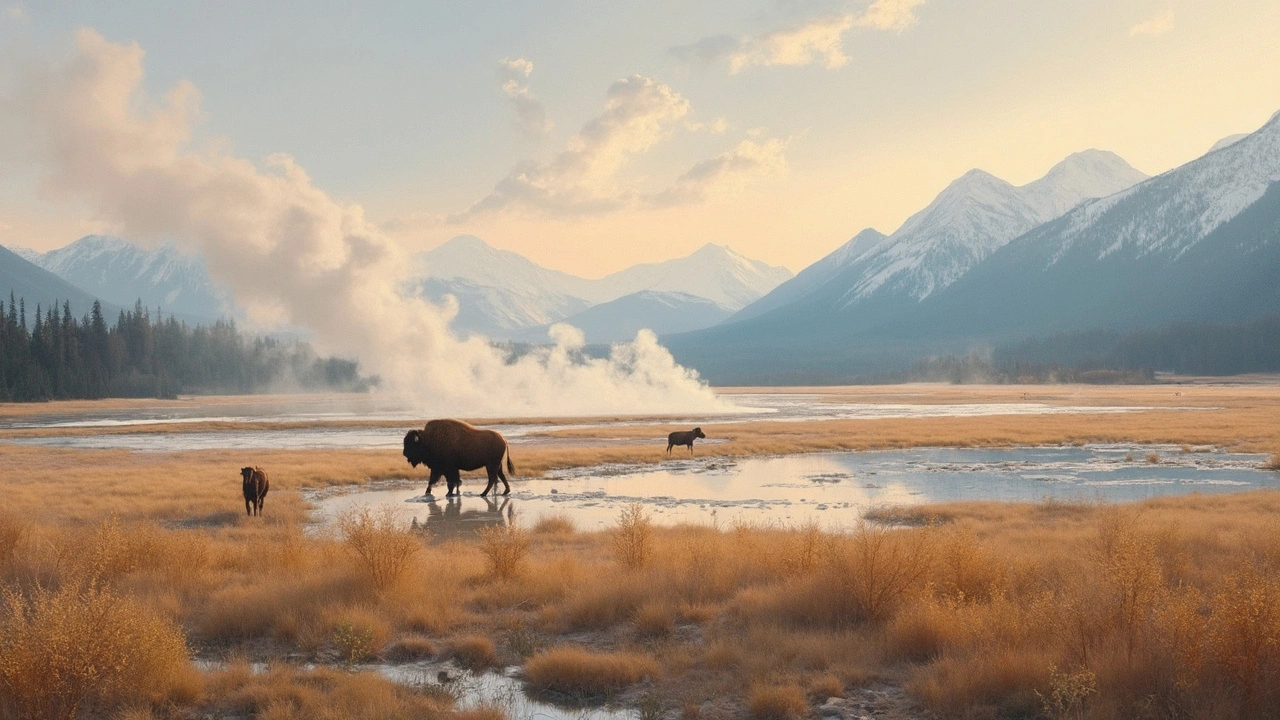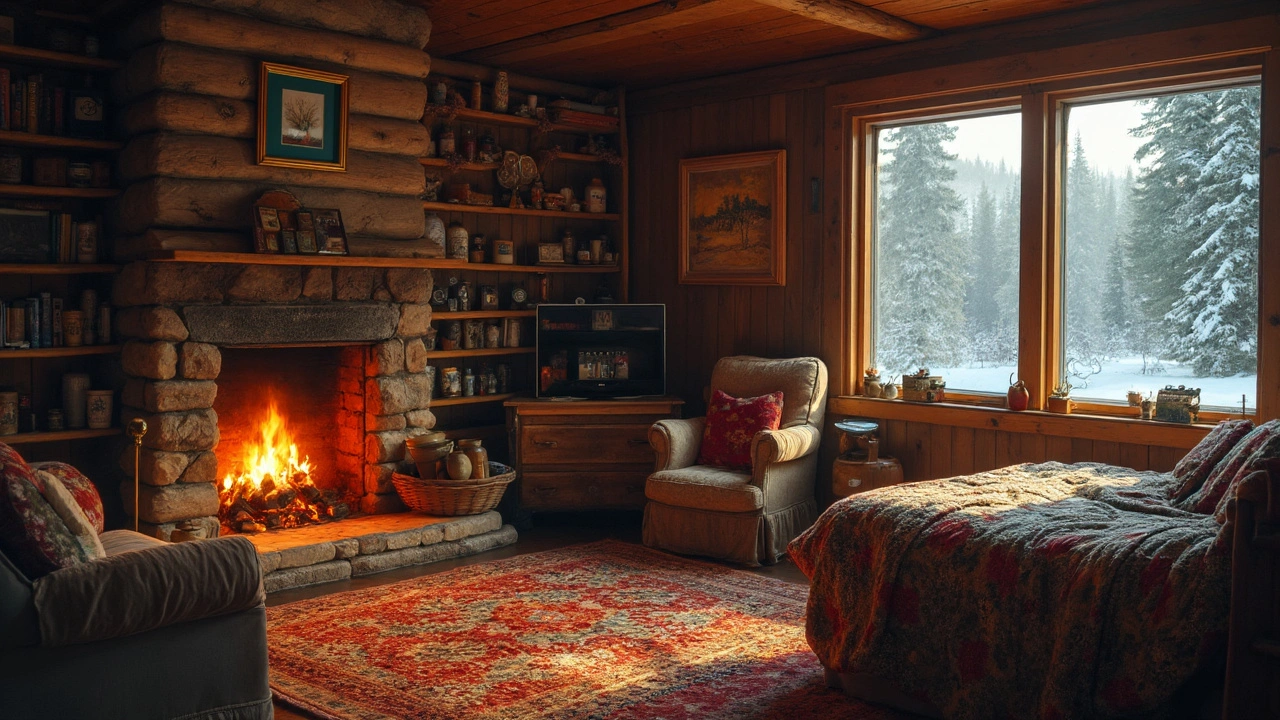Finding the Cheapest Month for a Yellowstone Adventure

Understanding Yellowstone's Pricing Roller Coaster
Timing can make or break your Yellowstone adventure's budget. If you're wondering when you should pack your bags and head to this iconic national park without spending too much, you're in the right place. The truth is, Yellowstone's prices vary wildly throughout the year. In the bustling summer months, everything, from accommodations to park fees, reaches its peak. This is when families, road trippers, and international tourists flock to this natural wonder, causing prices to soar. It's no surprise that you might feel your wallet protesting during this time. However, if you can brave cooler temperatures and perhaps even a bit of snow, digging into the off-season's specifics becomes worthwhile.
March and April, let's dive into these months. They can be your wallet's best friends. With the park just waking up from its winter slumber, visitor numbers are down, and so are the prices. This is when local businesses are itching to get their first wave of customers and often offer great discounts. Perhaps fewer geysers are active, and some roads might still be closed due to snow, but the wildlife is busy waking up, offering sights that summer can't provide—a bear silhouette emerging after hibernation, anyone?
If you're willing to bundle up a little, the savings may surprise you. Rental fees drop, entrance prices are reduced, and some accommodations adjust their rates to attract the brave off-season traveler. This period can offer an intimate experience with the park, sans the usual summer crowd hustle—not to mention the chance to capture some stunning photographs of Yellowstone's snowy landscape.
Where Your Dollars Can Stretch Further
Okay, you're sold on visiting in March or April. But what does that really look like for your budget? For starters, hotels and campgrounds generally offer off-peak rates, meaning you can save a pretty penny. Options range from economy lodgings in nearby areas like West Yellowstone to slightly more upscale, yet affordable, stays within proximity. If you're more of an adventurer, consider camping in one of the heated yurts or finding a cozy cabin. These accommodations often have discounted rates outside of summer's busy season.
The cost of renting gear such as snowshoes or cross-country skis also takes a dip during these months. Dip into your savings to rent these, and you'll be well-equipped to explore Yellowstone's serene landscapes, void of bustling summertime traffic. In-park eateries may have limited hours, but local businesses open their doors warmly, offering special deals, encouraging you to immerse yourself in genuine local fare rather than pricey tourist traps.
Transportation savings are also possible if you plan carefully. Fly into nearby airports during this quiet period, watch out for discounted flight rates, or hit the road and take in the scenic drives. While you can't put a price on the views that Yellowstone offers, getting there can be a little cheaper if you dodge peak travel times. Consider renting a vehicle that's versatile enough for unpredictable weather, ensuring your journey through the park is as smooth as possible.

Weathering the Off-Peak Weather
What's Yellowstone like when you're not naturally warming yourself under July's sun? March and April come with their own, unique charm—if you're ready and willing to trade in direct sun for slightly more unpredictable, cooler climates. Temperatures can hover between the low 30s to mid-50s Fahrenheit, depending on the day. While afternoon sunshine warms things up a bit, mornings and evenings might feel brisk, so layers become your best friend here.
While you might need a good jacket and some waterproof boots, the wintry backdrop offers beauty of its own. Imagine watching wildlife against a snowy landscape: bison roam with frost glistening on their fur, and wolves are easier to spot against the white canvas. Geysers spurt hotter steam into the chillier air, creating an atmospheric effect you simply can't capture in the heat of July.
Be prepared for some road closures. Certain sections of the park might still be snowbound, so plan your trip to focus on accessible areas. If Old Faithful is on your list, rest assured it can still be enjoyed this time of year, thankfully free from the throngs of tourists. Many services and ranger programs are running, albeit on a limited basis, so do a quick check before you set off each day.
Making the Most of Your Spring Escape
Yellowstone is a place to soak in, a marvel molded by the elements over millennia. Visiting during March or April means you're opting for an experience that's both personal and serene. And while you might not experience Yellowstone with every feature open and at its peak, you're in for a more personal connection with the landscapes and wildlife.
Wildlife viewing is a must! With animals emerging from winter and getting active, there's a good chance of seeing creatures up close. Bison are calving, and you'll see elk and moose against a backdrop of slowly melting snow. For photography buffs, the lighting during these months is king. With longer shadows, a softer sun, and dramatic skies, your photos will seem as if taken straight from a nature documentary.
Just imagine sipping hot chocolate while watching the sunset over Yellowstone Lake, or taking a quiet stroll around Biscuit Basin with hardly another soul in sight. Such moments are worth missing out on busy summer scenes. Be spontaneous—bag your itinerary and wander, see where the park takes you. Yellowstone quietly waits to reveal its secrets to those willing to embrace its off-peak vibe.
Oh wow, this is like the cheat code for Yellowstone trips, right? 🤩 Honestly, I always thought you had to blow a fortune to enjoy the park properly, but it’s cool knowing there’s a budget-friendly sweet spot. I’m super curious about the weather during those cheaper months — does it get too chilly for the average tourist?
Also, do you think the reduced cost means fewer activities are available or just less crowd chaos? Because honestly, half the fun of travel is mingling with fellow adventurers but I’m all for skipping the tourist stampede. Loving the idea of unique activities being highlighted too, maybe something off the beaten path? Let’s hear all those insider tips, please!
Yeah, I gotta say, it’s about time someone talked about the real deal on saving bucks here. The park’s magical, no doubt, but sometimes it feels like you’re paying for every breath you take! I’m eyeing that shoulder season or even early winter to dodge crowds and save bank. But seriously, anyone been there in late fall or early spring to comment on how much actually shuts down or stays open?
I’m all for freezing my tail off if it means not stepping on 1000 other people's feet every time I snap a photo. Nature’s meant to be experienced, not just seen from behind a crowd, right?
I totally agree with the points about cheaper months, but I’m wondering how accommodation options actually play out. Are we talking about campground fees, lodges, or Airbnb-type stays around the vicinity? Because sometimes those off months have fewer options, which can get pricey fast if you're not careful.
Also, I’d appreciate some tips on how to book ahead for those budget times. Like, do prices drop gradually, or is it better to wait till closer to your trip? Anyone tried snagging last-minute deals in Yellowstone?
Thanks in advance! 😊
Ah, the eternal paradox of pricing and authenticity in pristine wilderness tourism. One must wonder if these 'cheapest months' are truly the best, or just financial traps masked by temporal scarcity. The mechanisms of economic inflation conspire subtly with tourism dynamics, creating a kaleidoscope of experiential value that the average wanderer fails to decode.
Furthermore, consider the geopolitical subtexts of seasonal accessibility — how does this relate to environmental policies subtly shaped by capitalist agendas? I suspect these 'budget-friendly' periods might be engineered to redistribute tourist footfall while maintaining a veneer of sustainability. Shall we delve deeper into this labyrinth or keep drinking the Kool-Aid?
This is a really nice guide, thanks for sharing!
Just want to say, it’s so important to balance visiting these places with being respectful of the environment and local wildlife, especially during off-peak seasons. Sometimes the animals are more vulnerable in winter or spring, and being cautious can help preserve the park’s beauty for others.
Also, it’s helpful to consider that the cheapest months might not always be the warmest, so packing right and preparing can make a huge difference in having a pleasant trip. Just some friendly vibes for anyone planning out their adventure!
Alright, before everyone jumps on the tourist cost-saving bandwagon, can we pause and think: does the obsession with 'cheapest' months really enhance the experience? Maybe the real adventure is in accepting the costs — both financial and existential — of engaging with nature authentically rather than trying to twist nature for our convenience.
Plus, cheaper months might mean fewer crowds but also less vibrant wildlife activity or a bleaker landscape. Who’s to say this manufactured season determines the 'best' time to witness Yellowstone’s soul? 🙄 Food for thought.
Great discussion going on here. From my experience, the cheapest months are often November to early December and late April when tourism dips. But one must be prepared for unpredictable weather and some closures. Still, it’s a worthy trade-off depending on your tolerance for cold and fewer services.
Regarding accommodation, booking nearby towns outside the park can save a lot of money. Some local inns offer deals that big hotels inside the park never will. Has anyone explored that option? Sharing your stories would help everyone make better plans!
You wanna talk about cheapest months? That’s one way to look at it, but let’s not forget how the whole tourism industry manipulates us by creating false scarcity and push prices sky-high just when they know we’re desperate to visit. And yeah, they throw in ‘seasonal activities’ to justify the gouge, while secretly stashing the real gems away to keep the elite happy during prime seasons.
Wake up folks, it’s all a big dance! Still, a savvy traveler can play the game, so props to this post for pointing out some strategy. We just gotta keep our wits sharp or get duped.
While the notion of economizing a visit to Yellowstone is laudable, it behooves us to remember that the true essence of such an excursion is not found in mere frugality. One must prioritize the integrity of experience over pennies saved. The park’s grandeur demands respect and thoughtful engagement rather than transactional opportunism.
Moreover, strategic planning is essential, but should not ferment a superficial approach to what this majestic place represents. Let us not reduce monumental natural wonders to simple budget line items.
There’s something to be said for planning a trip to Yellowstone with a critical eye on cost, but let’s not sacrifice logic for cheap thrills. The park’s rules and seasonal restrictions are there for a reason, and ignoring that to chase lower prices is irresponsible.
Anyone planning this should also consider the timing of park maintenance schedules and access limitations, which vary throughout the year and can seriously affect your visit. Blindly aiming for cheapest months might lead to disappointment if you don’t do thorough research first.